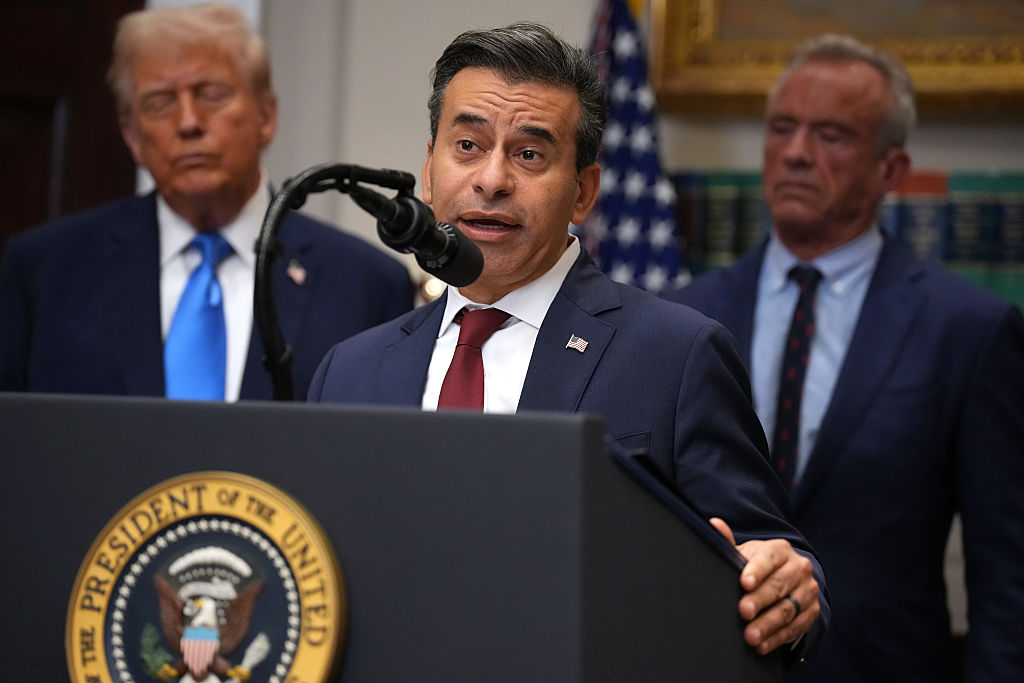Official COVID-19 death toll tops 6 million as pandemic ebbs in many places but roars on in others
The official global death toll from COVID-19 eclipsed 6 million on Monday - underscoring that the pandemic, now entering its third year, is far from over.
The milestone, recorded by Johns Hopkins University, is the latest tragic reminder of the unrelenting nature of the pandemic even as people are shedding masks, travel is resuming and businesses are reopening around the globe.
Remote Pacific islands, whose isolation had protected them for more than two years, are just now grappling with their first outbreaks and deaths, fueled by the highly contagious Omicron variant.
Hong Kong, which is seeing deaths soar, is testing its entire population of 7.5 million three times this month as it clings to mainland China's "zero-COVID" strategy.
As death rates remain high in Poland, Hungary, Romania and other Eastern European countries, the region has seen more than 1.5 million refugees arrive from war-torn Ukraine, a country with poor vaccination coverage and high rates of cases and deaths.
And despite its wealth and vaccine availability, the United States is nearing 1 million reported deaths on its own.
Death rates worldwide are still highest among people unvaccinated against the virus, said Tikki Pang, a visiting professor at the National University of Singapore's medical school and co-chair of the Asia Pacific Immunization Coalition.
"This is a disease of the unvaccinated - look what is happening in Hong Kong right now - the health system is being overwhelmed," said Pang, the former director of research policy and cooperation with the World Health Organization. "The large majority of the deaths and the severe cases are in the unvaccinated, vulnerable segment of the population."
It took the world seven months to record its first million deaths from the virus after the pandemic began in early 2020. Four months later another million people had died, and 1 million have died every three months since, until the death toll hit 5 million at the end of October. Now it has reached 6 million - more than the populations of Berlin and Brussels combined, or the entire state of Maryland.
Toll almost certainly much higher
But despite the enormity of the figure, the world undoubtedly hit its 6 millionth death some time ago. Poor record-keeping and testing in many parts of the world has led to an undercount in coronavirus deaths, in addition to excess deaths related to the pandemic but not from actual COVID-19 infections, like people who died from preventable causes but could not receive treatment because hospitals were full.
Edouard Mathieu, head of data for the Our World in Data portal, said that, when countries' excess mortality figures are studied, as many as nearly four times the reported death toll have likely died because of the pandemic.
An analysis of excess deaths by a team at The Economist estimates that the number of COVID-19 deaths is between 14.1 million and 23.8 million.
"Confirmed deaths represent a fraction of the true number of deaths due to COVID, mostly because of limited testing, and challenges in the attribution of the cause of death," Mathieu told The Associated Press. "In some, mostly rich countries, that fraction is high and the official tally can be considered to be fairly accurate, but in others it is highly underestimated."
Geographic disparities still sharp
The United States has the biggest official death toll in the world, but the numbers have been trending downward over the last month.
The world has seen more than 445 million confirmed COVID-19 cases, and new weekly cases have been declining recently in all regions except the Western Pacific, which includes China, Japan and South Korea, among others, the World Health Organization reported this week.
Although the overall figures in the Pacific islands seeing their first outbreaks are small compared to larger countries, they are significant among their tiny populations and threaten to overwhelm fragile health care systems.
"Given what we know about COVID ... it's likely to hit them for the next year or so at least," said Katie Greenwood, head of the Red Cross Pacific delegation.
Tonga reported its first outbreak after the virus arrived with international aid vessels following the Jan. 15 eruption of a massive volcano that was followed by a tsunami. It now has several hundred cases but - with 66% of its population fully vaccinated - it has so far reported people suffering mostly mild symptoms and no deaths.
The Solomon Islands saw the first outbreak in January and now has thousands of cases and more than 100 deaths. The actual death toll is likely much higher, with the capital's hospital overwhelmed and many dying at home, Greenwood said.
Only 12% of Solomon Islanders are fully vaccinated, though the outbreak has provided new impetus to the country's vaccination campaign and 29% now have at least one shot.
Global vaccine disparity continues, with only 6.95% of people in low-income countries fully vaccinated compared to more than 73% in high-income nations, according to Our World in Data.
In a good sign, at the end of last month Africa surpassed Europe in the number of doses administered daily, but only about 12.5% of its population has received two shots.
The Africa Centers for Disease Control and Prevention is still pressing for more vaccines, though it has been a challenge. Some shipments arrive with little warning for countries' health systems and others near the expiration date - forcing doses to be destroyed.
Eastern Europe has been particularly hard hit by the omicron variant, and with the Russian invasion of Ukraine, a new risk has emerged as hundreds of thousands of people flee to places like Poland on crowded trains. Health officials there have been offering free vaccinations to all refugees but have not been making them test upon arrival or quarantine.
"This is really tragic because great stress has a very negative effect on natural immunity and increases the risk of infections," said Anna Boron-Kaczmarska, a Polish infectious disease specialist. "They are in very high stress, being afraid for their lives, the lives of their children, their family members."
Cautious optimism in U.S.
The Biden administration plans to begin stockpiling millions of at-home tests and pills for COVID treatment, as part of a new 96 page plan that charts the future of the federal efforts to confront the pandemic.
"We've reached a new moment in the fight against COVID-19. Because of the significant progress we've made as a country, the determination and resilience of the American people, and the work we've done to make tools to protect ourselves widely available, we are moving forward safely, getting back to our more normal routines," White House COVID-19 response coordinator Jeff Zients told reporters last week.
The plan, first outlined by President Biden during his State of the Union address, aims to strike a balance between efforts to ease restrictions imposed to curb the virus while ramping up efforts to address the danger future variants could pose. Zients has discussed the White House's work on the new playbook in recent weeks; he told reporters that the administration was consulting a wide array of public health experts, local governments, and agencies to finalize the plan.
-- Alex Tin contributed to this report






